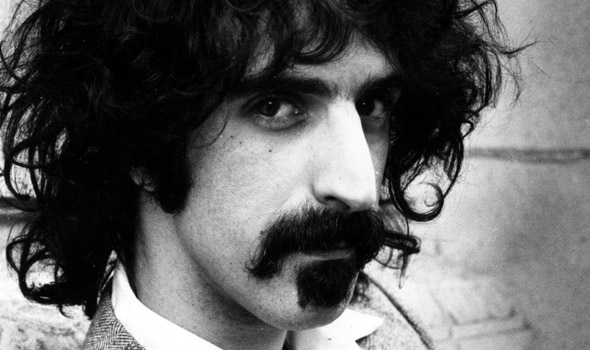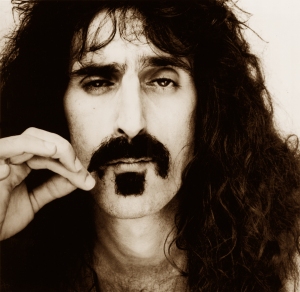
Starting last June, and running all the way throughout 2012, the entire Frank Zappa catalogue was re-issued by Universal. This was no tiny feat: the reissues came in waves and by it’s end, some 65 albums were reissued, covering everything from his forays into doo-wop, experimental music collages, jazz and hard rock. Not to mention live compilations and albums resisting such easy labeling.
Just finding out where to start is a daunting task for those new to his music. After all, not only is Zappa no longer among us, but also his albums have been out of print for years and his music’s rarely played on the radio. Suddenly: a wealth of albums to choose from, a whole wall of them at some retailers. Where does the neophyte start?
Although Zappa released a hell of a lot of music during his lifetime, his career is pretty easily broken up into chunks. There’s his early period with The Mothers of Invention, where his music was more experimental and came with a sharp satirical bent.
So, if you’re the kind of person who likes to start at the beginning, you’re in for a 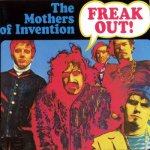 treat: Zappa’s first album is still one of his best, not to mention accessible, too. Released in 1966, Freak Out! offers a bit of everything Zappa: bluesy licks, psychedelic rock, wild bursts of experimentation and a sense of humor about society’s ills.
treat: Zappa’s first album is still one of his best, not to mention accessible, too. Released in 1966, Freak Out! offers a bit of everything Zappa: bluesy licks, psychedelic rock, wild bursts of experimentation and a sense of humor about society’s ills.
Enter through “Hungry Freaks, Daddy” and it’s crunchy Zappa and Elliot Ingber lead guitars, but stick with it for a couple of tracks: it goes into Phil Spector-influenced R&B on “I Ain’t Got No Heart”, then into the mind-melting, psychedelic “Who Are The Brain Police”. Just here – side one of the original album – gives a great impression of what Zappa’s strengths and how wildly creative the early Mothers were.
Later, on “Trouble Every Day”, Zappa sings about the Watts race riots and how the media capitalizes on chaos (“They say that if the place blows up / They will be the first to tell”) with some of his sharpest commentary, too.
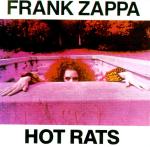
By the late 60s, Zappa was experimenting with jazz. By the time he broke up the original Mothers, the band included three saxophone players, a percussionist and a trumpeter. On his first proper solo album, Hot Rats, Zappa played it straight: it’s mostly instrumental and packed with a mix of tight compositions and looser, jam-oriented tunes.
On “Willie the Pimp”, the only song with lyrics, sung by the one-and-only Captain Beefheart, Zappa stretches outs his guitar playing with a monster solo, one of his all-time best. Later, he’d make a cottage industry out of guitar soloing (he’d eventually release three full albums of nothing but solos) and this is a great introduction to this side of Zappa’s music, as is the extended jam “The Gumbo Variations”. It’s got some nice solos by Sugarcane Harris and Ian Underwood, too.
There’s more to this album than monster jams, though. Both “Peaches en Regalia” and “Little Umbrellas” are tightly packed compositions: Peaches is Zappa at his sunniest (kind of reminds me of Weather Report) while Umbrellas is packed with Ian Underwood’s saxophones and keyboards. Later, famed fusion violinist Jean-Luc Ponty makes an appearance.
In the mid 70s, Zappa had his first brush with main mainstream success, when “Don’t 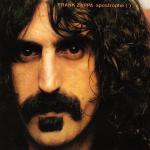 Eat the Yellow Snow” made the Pop Singles chart and brought his 1974 album Apostrophe into the top 10. This was the beginning of a fertile period for Zappa, who released some of his best music between 1973 and 1976. Both Apostrophe and 1973’s Over-Nite Sensation are prime slabs from this period and build on each other, too.
Eat the Yellow Snow” made the Pop Singles chart and brought his 1974 album Apostrophe into the top 10. This was the beginning of a fertile period for Zappa, who released some of his best music between 1973 and 1976. Both Apostrophe and 1973’s Over-Nite Sensation are prime slabs from this period and build on each other, too.
The second half of Apostrophe has some of Zappa’s best tunes: the jamming title track, with killer bass playing by Cream’s Jack Bruce, the soulful “Uncle Remus”, the dark and bluesy “Stinkfoot”. Meanwhile, Over-Nite has Zappa ripping on bad TV with “I’m the Slime”, getting to business on “Dirty Love” and thinking about raising up some dental floss on “Montana”.
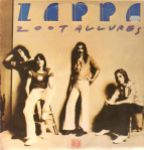 By 1976, Zappa had retired the Mothers moniker for good and on Zoot Allures ditched most of his band. It’s a bit of a hodgepodge of an album, mixed between live performances, rehearsal tapes and studio work and a large part of it played by Zappa himself, but it’s also one of his most consistent albums of the late 70’s. A nice balance of all the hats Zappa liked to wear: experimental composer, guitar hero and social satirist (“Disco Boy”). Not to mention sex jokes (“Ms. Pinky”).
By 1976, Zappa had retired the Mothers moniker for good and on Zoot Allures ditched most of his band. It’s a bit of a hodgepodge of an album, mixed between live performances, rehearsal tapes and studio work and a large part of it played by Zappa himself, but it’s also one of his most consistent albums of the late 70’s. A nice balance of all the hats Zappa liked to wear: experimental composer, guitar hero and social satirist (“Disco Boy”). Not to mention sex jokes (“Ms. Pinky”).
Take “Friendly Little Finger”, which sounds like an extended guitar doodle. It mostly is (it’s him goofing around backstage), but it’s also a showcase of his experimental side: he put his solo overtop of an unrelated drum track, then added an entirely new bass line. It works out surprisingly well.
Zoot is also home to one of Zappa’s personal favorite songs: “Black Napkins”, a showcase for his guitar frenzies. Recorded live in Japan, he quickly goes from a slow blues to a frenzied solo where his guitar sounds like it’s having trouble keeping up, the notes piling up against each other. It’s one of his finest recordings and a song he’d return to on every tour after.
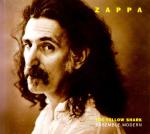 Throughout his career, Zappa liked to consider himself a composer. Even before his first record, he was writing classical scores. It was a theme he’d return to now and again, unfortunately to somewhat mixed results, but the last album releases in Zappa’s lifetime, 1993’s The Yellow Shark, is a career highlight, too.
Throughout his career, Zappa liked to consider himself a composer. Even before his first record, he was writing classical scores. It was a theme he’d return to now and again, unfortunately to somewhat mixed results, but the last album releases in Zappa’s lifetime, 1993’s The Yellow Shark, is a career highlight, too.
By this point, Zappa had abandoned playing rock music (his last tour was in 1988) and was focusing on composing scores, mostly on his Synclavier. It was great for his needs: he had trouble persuading orchestras to play his older music and his new stuff was getting too complex to be handled live. His health was failing, too, and he’d die in late 1993.
 During the summer of 1991, he met the Ensemble Modern, a German-based chamber ensemble. They struck it off, worked together for the better part of a year and in 1992 played several concerts that formed the basis of this album, which remains the best introduction to his classical music. This was a last triumph for Zappa: a ready band tackled his most challenging music and played to an adoring crowd. Zappa’s appearance here was his last public appearance.
During the summer of 1991, he met the Ensemble Modern, a German-based chamber ensemble. They struck it off, worked together for the better part of a year and in 1992 played several concerts that formed the basis of this album, which remains the best introduction to his classical music. This was a last triumph for Zappa: a ready band tackled his most challenging music and played to an adoring crowd. Zappa’s appearance here was his last public appearance.
The compositions range from his earliest (“Uncle Meat”, “Dog Breath”) to late pieces like “Outrage at Valdez” or “Times Beach”. It’s an album rich in textures and sounds, more fleshed out and warm-sounding than his Synclavier albums and with enough weird twists and turns that it’s sometimes hard to believe it’s a live recording.
A personal favorite is “Welcome to The United States”, which mixes Zappa’s menacing score with an inane questionnaire handed out to visitors to the US (sample question: “Have you ever been or are you now involved in espionage, sabotage, terrorist activities or genocide?”). Even at the end of his life, he wasn’t above pointing out the dumb things we all live with. Another stunner is their take on “G-Spot Tornado”, a song Zappa thought was impossible to play live.


